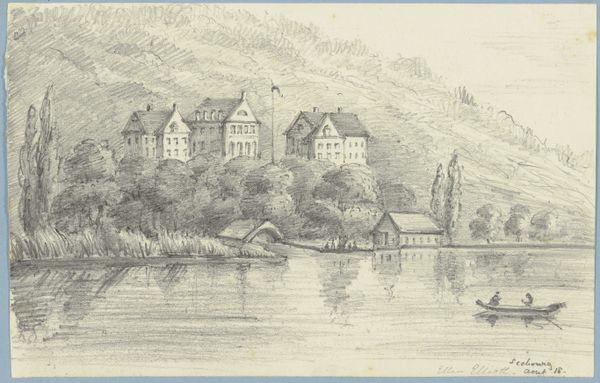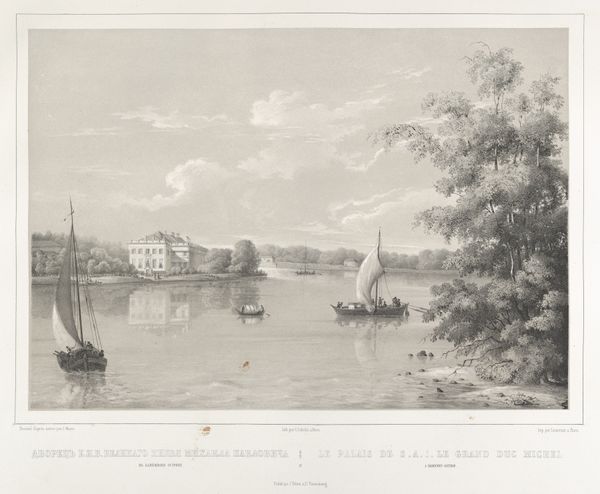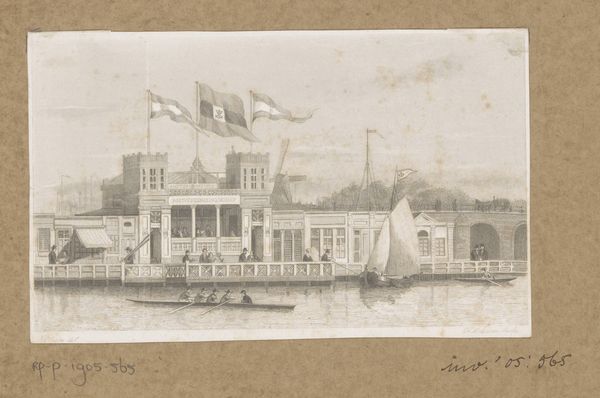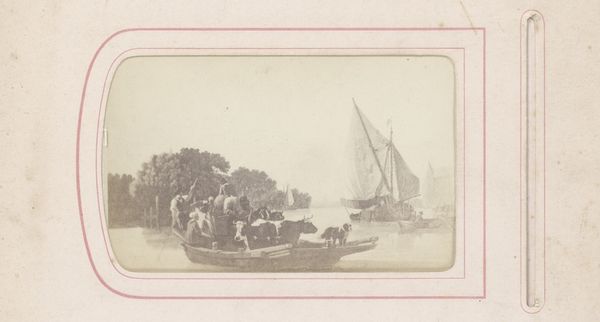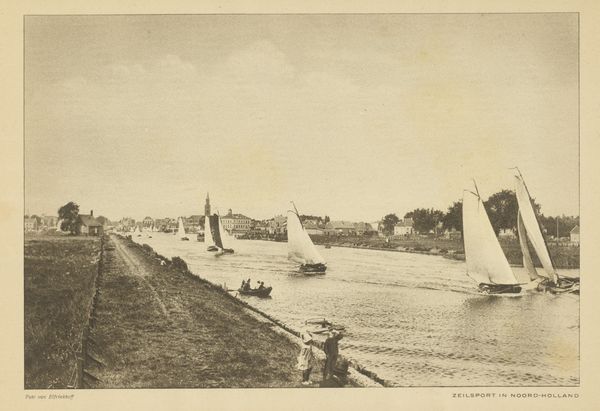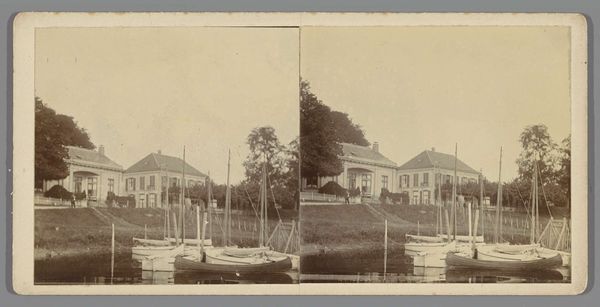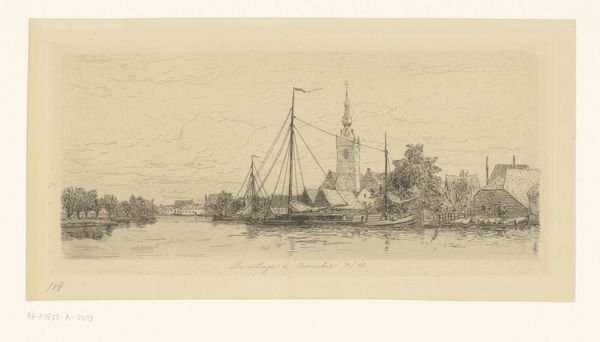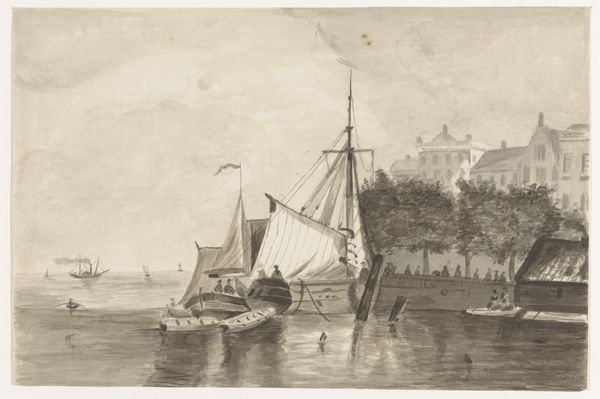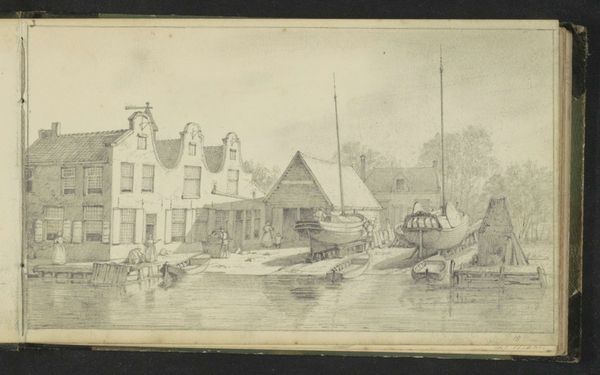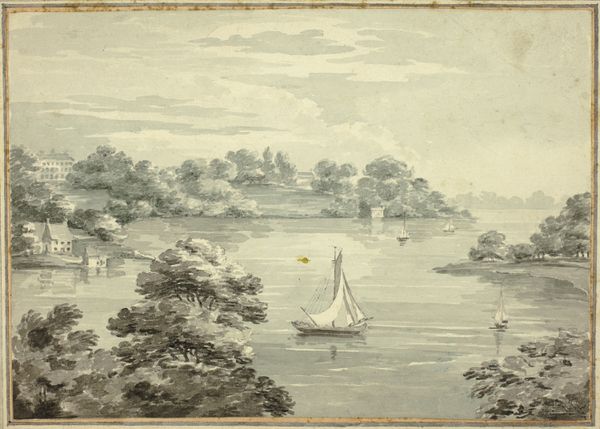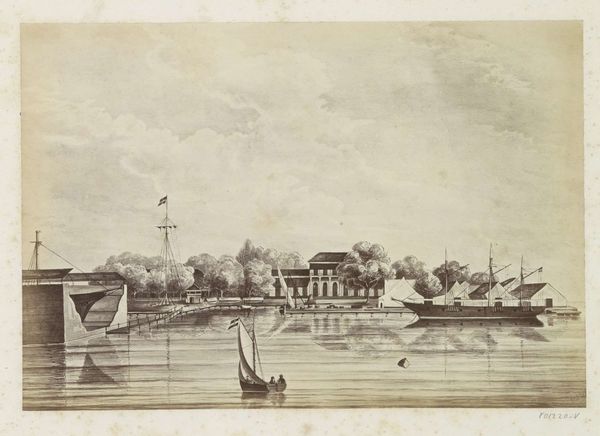
Copyright: National Gallery of Art: CC0 1.0
Curator: Here we have Fritz Stoltenberg’s "Uhlenhorst," a drawing from 1893. My immediate reaction is the tranquility it evokes, despite the bustling river scene. There's a sense of wistful elegance. Editor: It’s fascinating to consider the means of production of such a scene. Drawings like these, likely made for reproduction, fueled a demand for picturesque views of leisure and development during the rapid industrialization of the late 19th century. We’re looking at a commodity as much as a view. Curator: I agree. The very visible, yet subtly shifting lines define space so exquisitely—it directs your eye toward architectural grandeur but it doesn't disregard the watercraft moving across the river and its rippling surface. It’s almost like observing the world through the lens of selective perception. Editor: And think about the materiality of this work: the specific paper chosen by Stoltenberg, the quality of the ink, the tools used to apply it. These elements speak volumes about artistic practices during his era and the intended audience for these reproduced landscapes. Were these readily available images affordable? Who exactly was meant to gaze upon them? Curator: That tower—such a dominant vertical element! And consider how he’s used a restricted palette, focusing instead on varying textures of shadow to convey volume and depth, drawing us into an idyllic scene of the leisured class as seen from the banks of Hamburg. Editor: The presence of labor, of the working class facilitating leisure—evident from the boats plying the waterway—is key to understanding this image’s social context. It invites questions about the socio-economic relationships shaping Stoltenberg's representation of "Uhlenhorst". Curator: Indeed. What appears to be a snapshot of harmony perhaps obscures deeper inequalities. Still, in considering form, the sailboats slicing through water is beautiful. Editor: Right, but it is important not to gloss over this point and note the processes and dynamics involved in creating and circulating these idealized views, processes of labor, class, and consumption of imagery in 19th century Hamburg. Curator: Ultimately, it underscores the power of even a simple drawing to reflect, or refract, its historical moment. Editor: Precisely. The appeal to form highlights production.
Comments
No comments
Be the first to comment and join the conversation on the ultimate creative platform.

